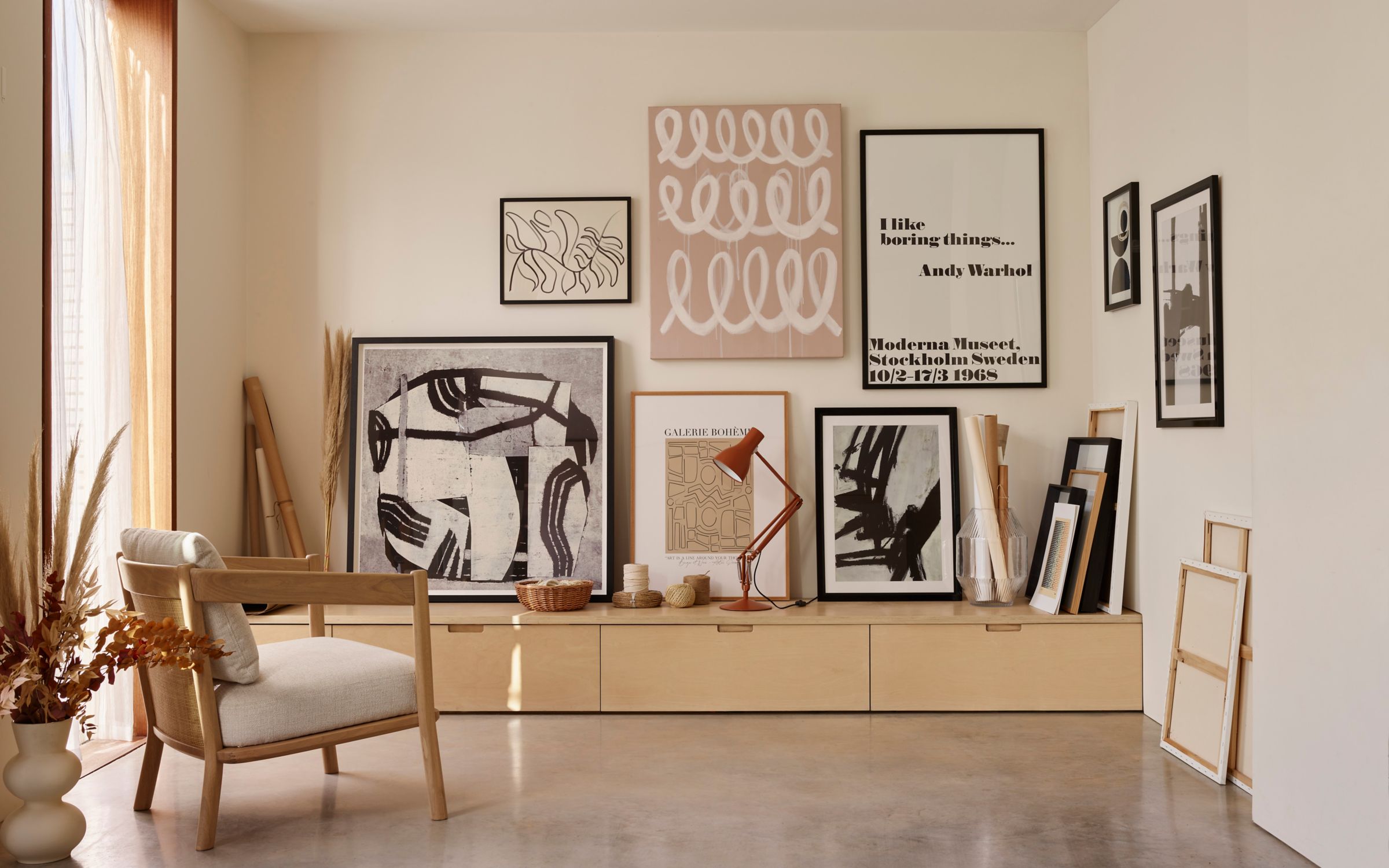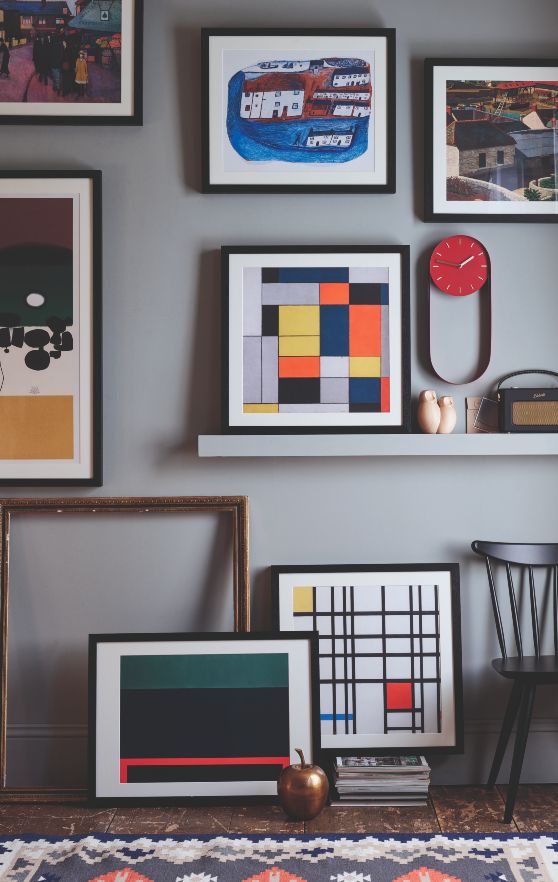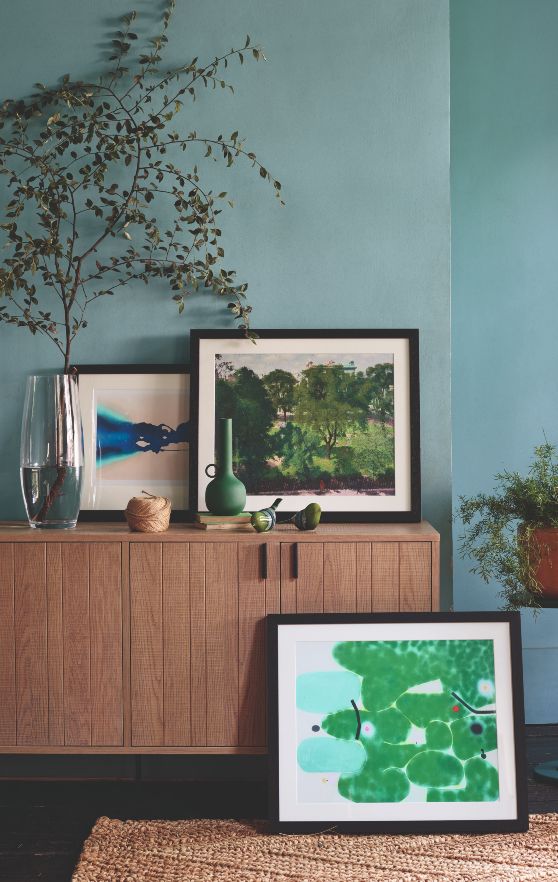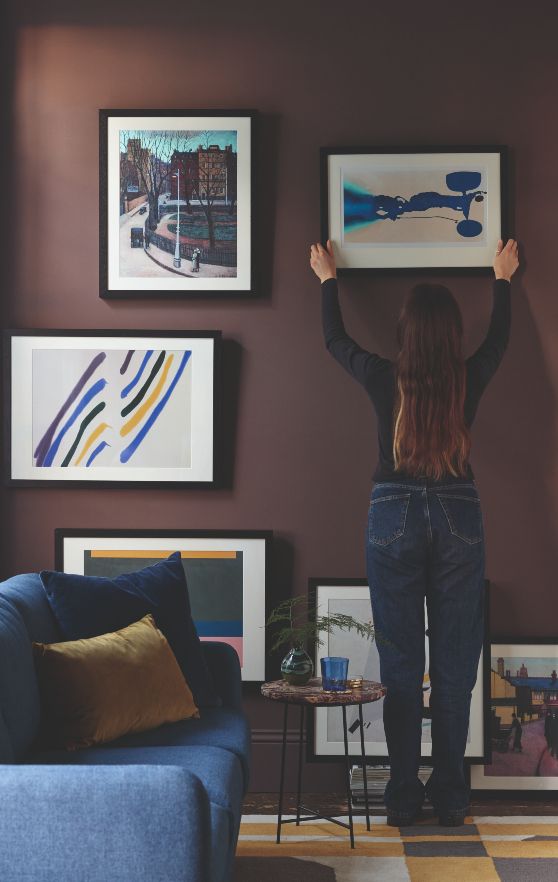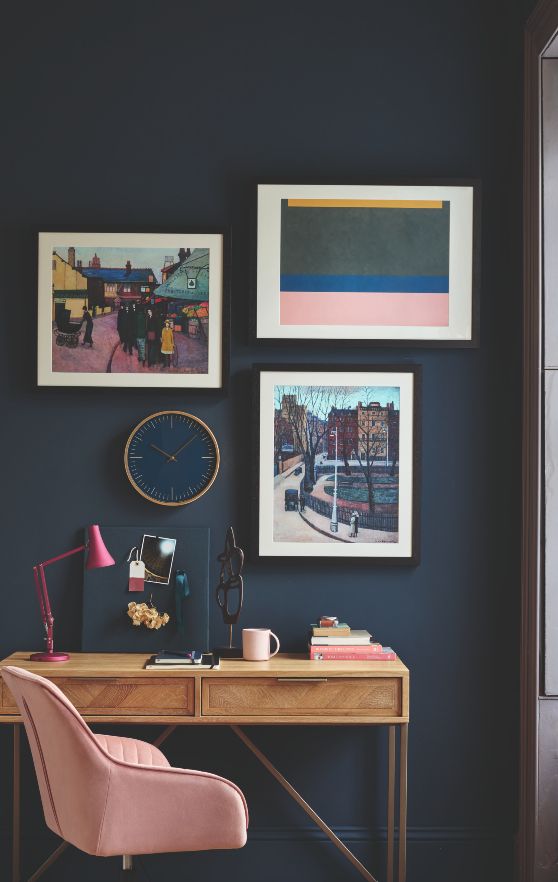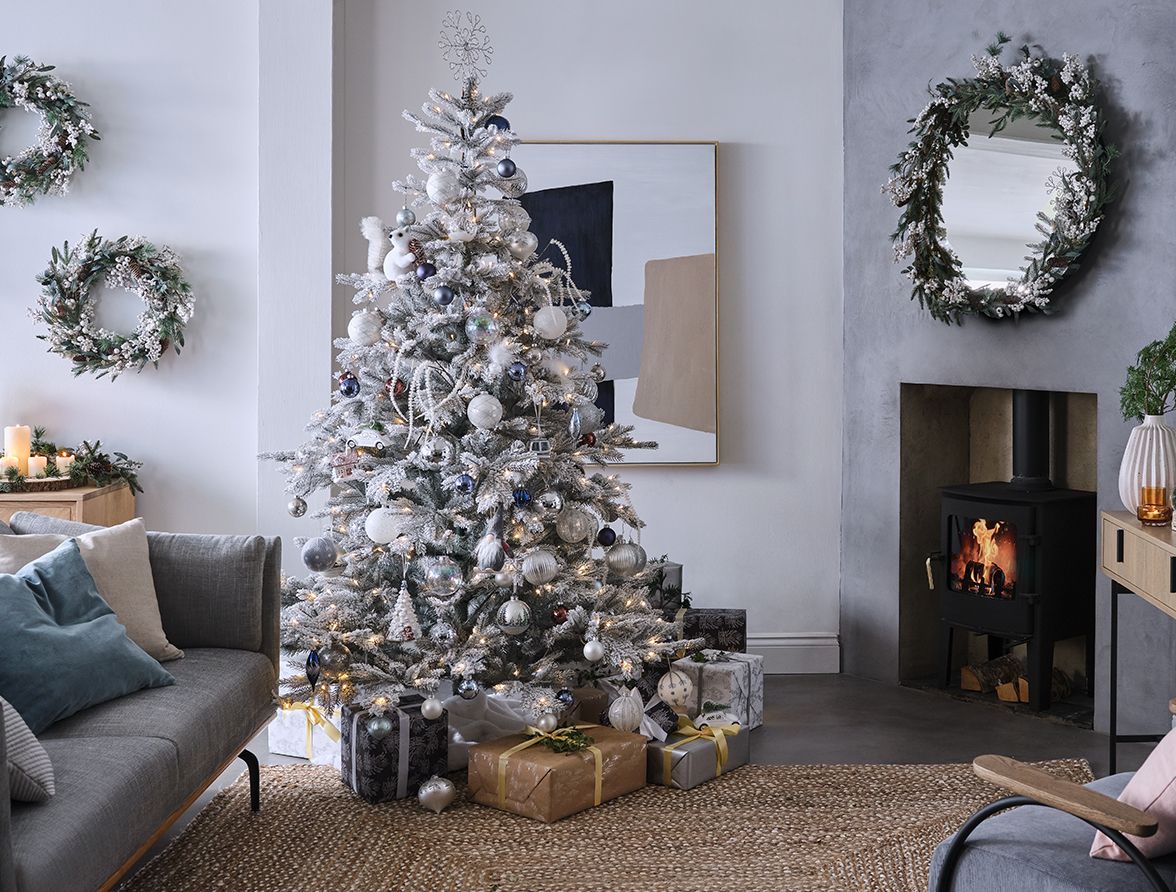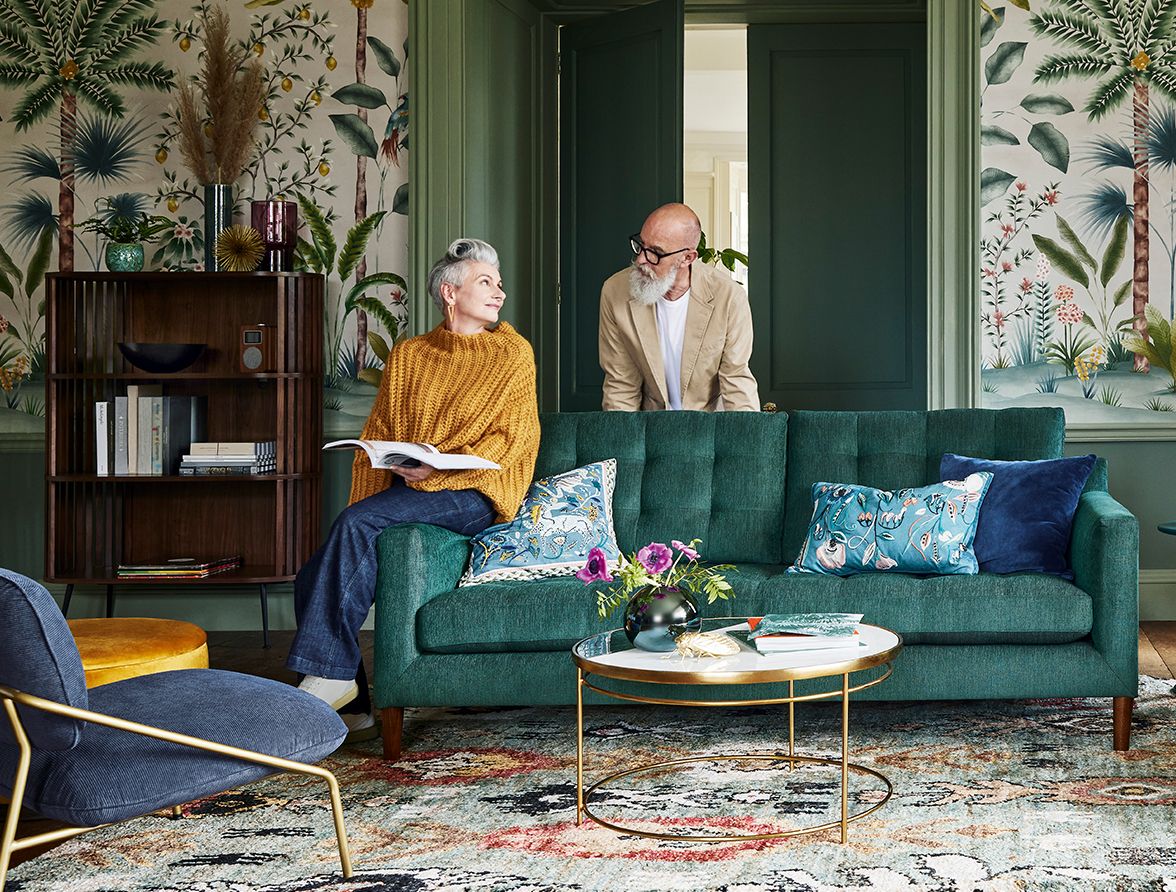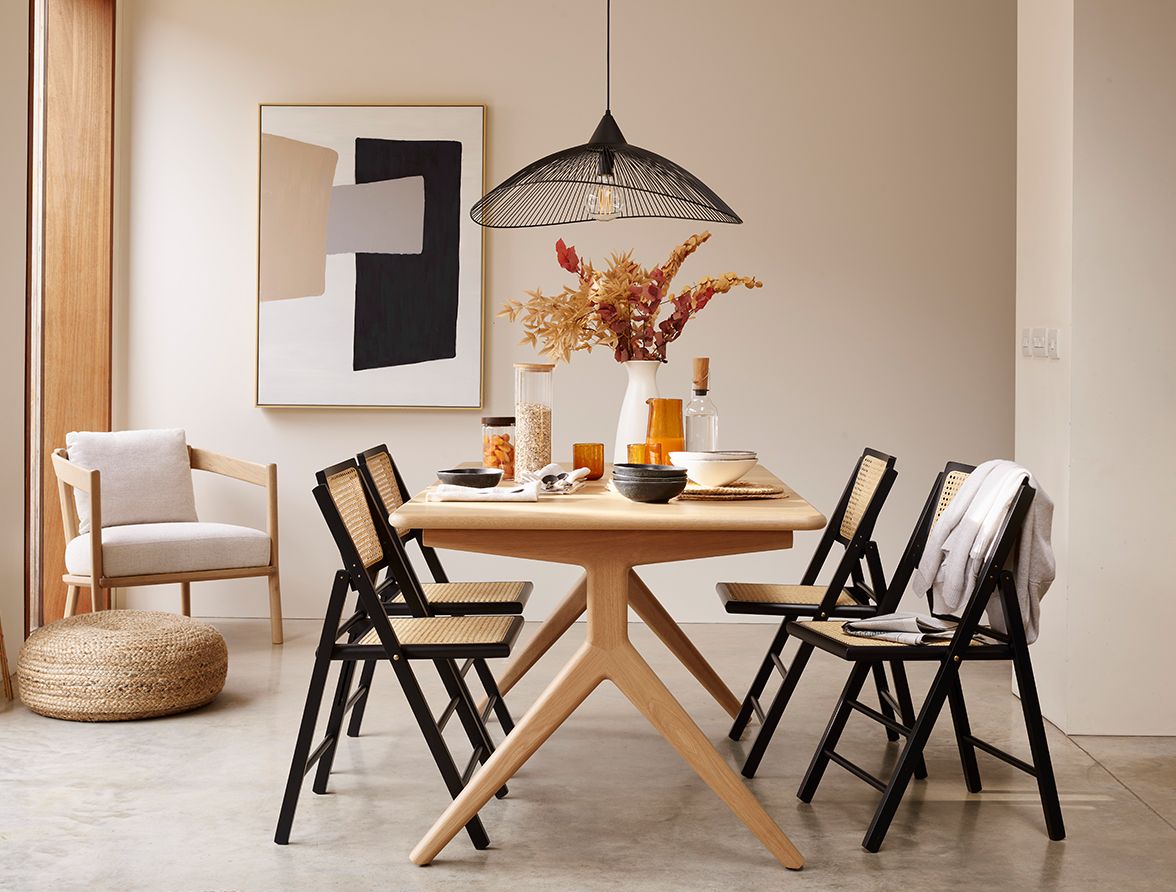How to hang wall art
Art can bring a room to life, especially if it’s from the new collaboration between John Lewis and Tate
Wall art is one of our favourite ways to accessorise a room. What you hang there speaks volumes, whether it’s restful, provocative, deeply personal or just a bit of fun.
Works of art often look their best when they hang out with the like-minded so consider grouping pictures by colour, design or theme. Clusters like that have greater impact, but they come with the challenge of deciding how to curate such a group show. Not to worry, though, our tried and tested methods will help guide your way to a great exhibition.
Start with the art
Chances are you already have a few favourite pieces to work with. Think about where you want to hang them and how much space is needed for them to sit comfortably. Fixed features such as a chimney breast and alcoves tend to dictate the scale and format of the art that can work there, while long gallery walls like you find in a hallway, are usually seen from two view points – the space as a whole and at close quarters – so make sure your display works for both.
How the viewer interacts with the art is always a consideration. Works in the entrance hall can set the tone for your home, while you can draw the viewer in with small-scale pieces in nooks and crannies. Tiny items work well in the smallest of rooms such as the downstairs loo – it’s a great way of adding an element of surprise or humour.
The places where you spend the most time, such as living rooms and dining areas, will get the most views so make sure whatever you hang there isn’t something you’re going to tire of and that it’s appropriate for guests of all ages and mindsets.
Art can go everywhere, so don’t overlook the bathroom and kitchen. These places in particular can often benefit from the charm and character of something handmade.
By arrangement
When grouping artworks, consider how the eye travels across them as well as how the frames look together. Several pieces of roughly the same dimensions or proportions can work well in a regimented row (space them evenly and make sure they’re straight). A single row should sit with the centre of the paintings at the average eye level which is around 145-155cm up from the floor.
Where sizes vary, map out the larger pieces in the row and fit the smaller works in between. The easiest way to do this is to arrange them on the floor first. If you prefer something busier and more relaxed, a salon hang (clustering a group of works in an organic, unregimented way) is a great way to bring together different sizes, formats and even shapes. Try starting with the boldest image at the centre and work outwards and making the spacing in between uniform to help keep things neat – 5-7cm is a good rule of thumb. Need help with combinations? Print out mini images that are easy to switch around and create your own map to guide you.
Not ready to commit or bang nails in the wall? Stylists love to prop. Large pieces can sit on the floor, small pieces can prop on a sideboard, cabinet or shelf. It’s also a good temporary solution while you decide where a piece should hang, letting you try out different locations.
In the frame
Prints and photographs will need an enclosed frame to protect them against dust, damage and sunlight whereas original paintings on canvas can be unframed or have an open frame for a neat finish.
Consider the colour, material and style of frame as part of the overall look. An old ornate gilt frame (track them down in charity shops) can add flamboyant weight to a single picture while simple black or wooden frames with inset mounts will bring uniformity to a collection of prints or photos. When choosing frame sizes, make sure your artwork has room to breathe. Be generous with the mount – it will make the image feel more special.
Tools of the trade
Before reaching for the hammer and nails, it’s important to establish what your walls are made of. Masonry walls, in brick or concrete, will require a drill, screws and wall plugs/Rawl plugs. Cavity walls often conceal cables and pipes so approach with caution (an electronic tester will help you to establish where there is electrical current or metal).
You will need specialist plasterboard picture hooks or screws for hanging on drywalls/plasterboard. For a strong bond that can take weight without leaving a mark, adhesive strips and hooks are very effective when used correctly.
Whichever hanging method you choose, a tape measure, pencil and spirit level should also be considered essentials in your picture-hanging tool kit.
Pick your favourite masterpiece
Looking to add to your collection? This autumn, John Lewis launches a new collaboration with Tate, making some of the 70,000 artworks in its collections available to buy as framed prints.
‘We selected a range of artists to suit a broad range of styles,’ says Katherine Lemin, Partner & Buyer, Wall Decor. ‘We chose classic landscapes from John Nash, Evelyn Dunbar, and Sine Mackinnon, and contemporary abstracts from Victor Pasmore, Jean Spencer and Piet Mondrian. We’ve got revolutionary artists such as Ben Nicholson and Kazimir Malevich as well as elegant abstracts from Morris Louis and Jean Spencer. It really is a collection for everyone.’
Maria Balshaw, Director of Tate, suggests following your heart when choosing a new piece for your home. ‘The art on your walls should speak of the thing that makes you tick, not what somebody else has told you is good,’ she assures. Find out what Maria chooses for her own walls in the Autumn 2021 edition of At Home magazine. Pick up a copy in store or read the digital issue.
Framed prints from the new Tate Collection start at £115.
EDITOR’S TOP PICKS

